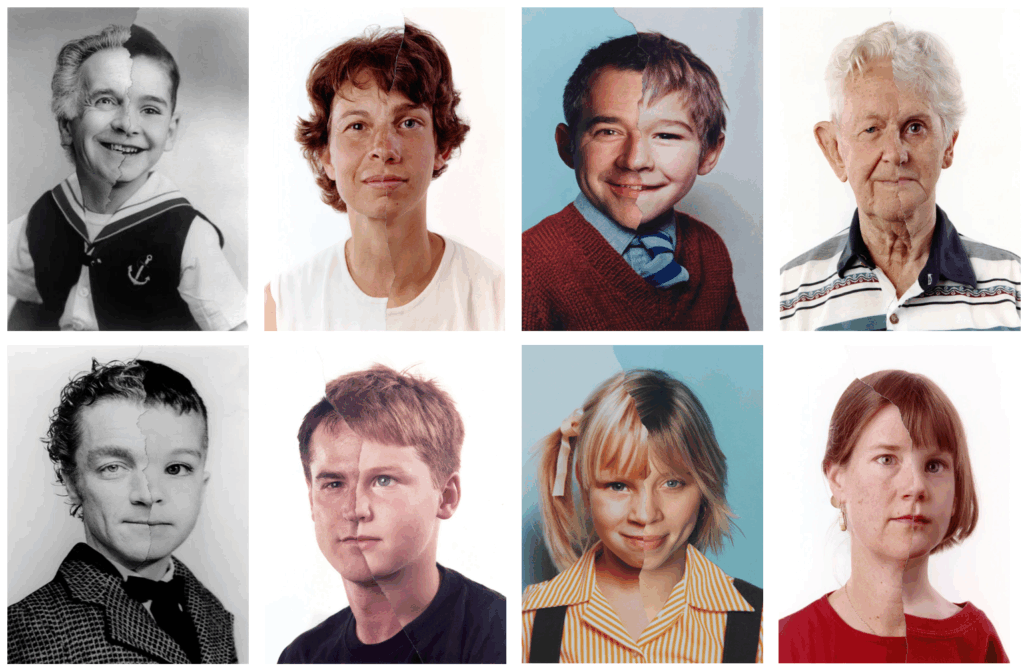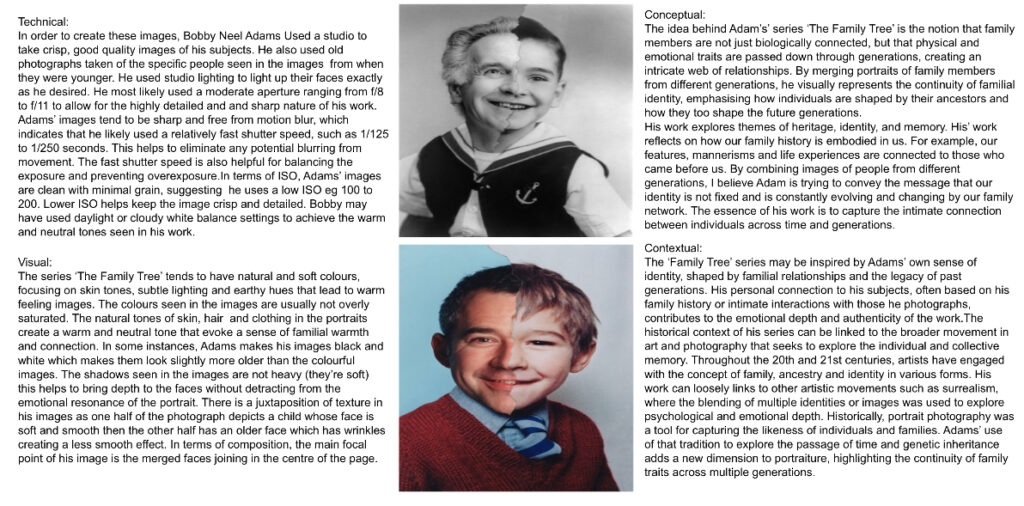
About him
Bobby Neel Adams is an American artist best known for his photographic series called ‘The Family Tree’. Bobby Neel Adams had always been interested in photography since a young age. He had a passion for storytelling visually and photography provided him with a way to explore and capture moments in time. He was drawn to the idea that photographs could transcend mere representation and believed they could be used to explore deeper narratives of human experience, memory and transformation. He aspired for his work to not only capture the essence of his subjects but to also reflect on the different connections between individuals, time and family. His series ‘The family tree’ was inspired by his fascination with the passage of time and its effect on human beings. In this series of images, it involves him using photographic manipulations to juxtapose the faces of individuals at different points in their lives, creating a connection between generations. The photographs feature two images of a subject at two different ages, which he then blends together to highlight the similarities and differences between his subject’s younger and older selves. He creates his images by overlapping the faces of an individual with their parents, grandparents or great grandparents. His images allow his viewers to reflect on their own family histories and begin to understand how we are shaped by the people around us and those who came before us. In this project, he wanted to explore how individuals are connected across generations through biological inheritance and shared experiences. His work suggests to me that family is an evolving part of one’s identity as he explores the physical and emotional marks we leave on one another and the relationships that define us. Bobby Neel Adams creates his photographs by combining his different images together in a darkroom. He overlays two photographs of people at different ages or generations, carefully manipulating the images so that they seem to blend together seamlessly resulting in a singular portrait showing half of a face from both the older and younger generation.
Image analysis

How he links to Union
One of the key concepts seen in his work is the idea of aging. I think this links to the theme of union as by showing how time inevitably leaves its mark on every individual throughout his work by merging different generations together, he explores the idea of the aging as something that binds all of us together, regardless of background or any differences we may have. His series called ‘The family tree’ also links to the theme of union as he explores the importance of family and relationships beyond it eg friends, in shaping our identity. While his work mainly explores themes of family, aging and legacy, it also touches on the broader concept of unity and how the bonds we share with others ( whether that be biological or chosen), all influence who we are. However, his series mainly looks at the union of family members across generations as he creates visual representations of the interconnectedness between different generations throughout his work. These images depict the continuity of life within family and the different, shared traits and experiences that are passed down over time. His work highlights the union of generations and how they help form one’s identity physically and emotionally. I think his work is portraying how everyone is shaped by their ancestry, carrying forward not only physical resemblances, but also emotional and cultural legacies of those who came before them. However, I believe this idea of family union can also be expanded to the union of friends and how they equally play a role in shaping who we are. While bloodlines play an undeniable role in shaping identity, the people we choose to surround ourselves with (eg our friends) also become a core part of our story and have an equally important impact on us. Adams’s work can be seen as a reflection of how union (in any form) helps individuals evolve. For example, although family members are linked through their shared genetic and heritage, friends also contribute to our development through their support, experiences and perspectives. I think the blending of faces seen in his images act as a metaphor to show how these different relationships all act together to influence who we are as individuals. Additionally, the contrast between old and young faces in his images suggests to me the importance of friendship during childhood, adolescence, adulthood and old age as these friendships act as a vital support system and help us to adapt and grow as time passes and we begin to change. This idea of the importance of friendship in forming who we are has inspired me to recreate his images but by combining pictures of my different friends together instead of them with family members.
